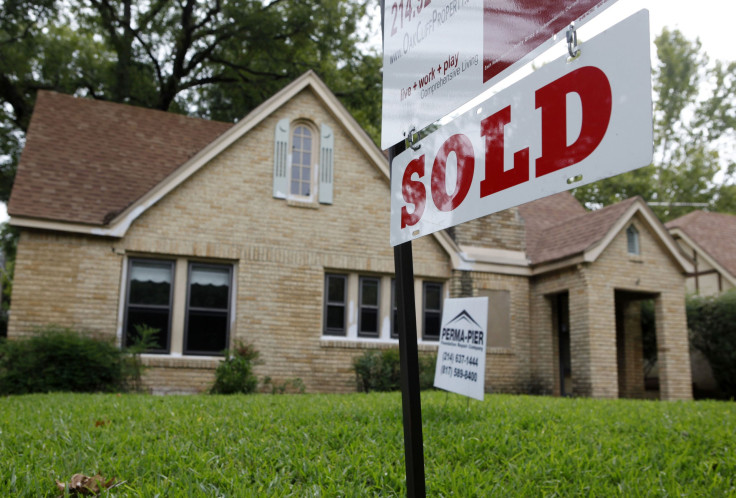US Housing Market Outlook 2014: Slowdown In Housing Recovery, Home Prices To Rise By 4% Next Year

U.S. home prices are on track to end 2013 up an impressive 11 percent, economists say, but that’s probably going to be the fastest rate of home price appreciation for years to come. Home price appreciation is expected to slow “sharply” over the next several years, with gains of just 4 percent penciled in for 2014.
The rapid bounce in house prices, which was driven by strong investment buying and tight supply conditions, will soon start to moderate. The next stage of the recovery will be characterized by strengthening activity among owner-occupiers and mortgage- dependent buyers, a rising number of willing sellers and a much more moderate pace of house price inflation.
Since hitting the trough in the fourth quarter of 2011, the housing market has made substantial progress. So far, national home prices have risen 14 percent, reversing about a quarter of the cumulative decline.
This has generated $2.8 trillion of wealth from real estate, which combined with the sharp gain in the stock market has strengthened household balance sheets. However, housing construction has been slower to recover, still trending notably below the historical pace of 1.5 million.
Nonetheless, residential investment managed to add 0.3 percentage points to growth in 2012 and is on track to add 0.4 percentage point this year.
The U.S. economy has improved markedly over the past year. Monthly job gains have climbed back to the 200,000 mark, which could prompt a tapering of the Federal Reserve’s asset purchases over the next few months. But any further increase in long-term interest rates will be modest, according to Capital Economics’ Paul Diggle.
After all, the Fed has strengthened its forward guidance to emphasize that it does not expect official rates to rise for at least another couple of years. Moreover, the fading fiscal drag will more than offset any impact from a modest rise in long-term interest rates, allowing economic growth to accelerate from around 1.8 percent this year to 2.5 percent in 2014.
“Even if mortgage interest rates edge a little higher, the recovery in housing market activity should also continue,” Diggle said in a note. Sales activity initially dropped when rates spiked, but the latest data suggest that this was a period of adjustment rather than the start of a weaker trend.
In fact, on any long-term comparison, mortgage affordability is, and for some time longer will remain, favorable. Other than the past four years, at no point during the 40-year history of the National Association of Realtors’ affordability index has housing been as affordable as it is now.
Furthermore, by comparing real house prices to their long-run trend level, Diggle found that housing is actually, on average, still 12 percent below fair value. While that’s down from 21 percent two years ago, it still gives prices room to increase before worries about overvaluation become more pressing.
Diggle projects that the 30-year fixed mortgage rates, which currently stand at 4.5 percent, will end 2014 at 5 percent and 2015 at 5.5 percent.
“Experience prior to the credit crunch suggests that 30-year rates need to reach 8 percent to 10 percent to reduce home sales below their current level,” Diggles said. “In other words, a rise in mortgage rates to 5 percent or so is unlikely to do lasting damage to housing market activity.”
For one, mortgage credit conditions continue to ease gradually. Historical precedent suggests that additional increases in rates would be accompanied by a further loosening in mortgage credit conditions. This is because higher rates can raise banks’ return on new lending at the same time as the refinancing collapse removes an alternative source of profits.
Capital Economics’ forecasts are for existing home sales to total 5.1 million this year, 5.2 million in 2014 and 5.3 million in 2015. New home sales will perform better, totaling 0.5 million this year, 0.6 million in 2014 and 0.7 million in 2015.
In terms of regional trends, Capital Economics ranked states according to their short-term housing prospects by analyzing the region’s economic backdrop as well as housing supply and demand. According to the firm, the outlook for the housing market is most promising in North Dakota, South Dakota and Oklahoma, while it is least promising in North Carolina and Delaware.
© Copyright IBTimes 2024. All rights reserved.





















